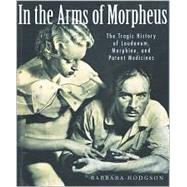
Barbara Hodgson is a book designer and writer and a founding partner at Byzantium Books in Vancouver, B.C. She is the author of two novels, The Tattooed Map and The Sensualist, and she is the co-author with Karen Elizabeth Gordon and Nick Bantock of Paris Out of Hand, a fictional guidebook to Paris. Her non-fiction works are The Rat: A Perverse Miscellany and Opium: A Portrait of a Heavenly Demon.
| Introduction: In the Arms of Morpheus | 1 | (17) | |||
|
17 | (28) | |||
|
45 | (34) | |||
|
79 | (24) | |||
|
103 | (22) | |||
|
125 | (14) | |||
| Appendix: Opium at the Movies | 139 | (2) | |||
| Notes | 141 | (3) | |||
| Bibliography | 144 | (4) | |||
| Acknowledgements | 148 | (1) | |||
| Index | 149 |
The New copy of this book will include any supplemental materials advertised. Please check the title of the book to determine if it should include any access cards, study guides, lab manuals, CDs, etc.
The Used, Rental and eBook copies of this book are not guaranteed to include any supplemental materials. Typically, only the book itself is included. This is true even if the title states it includes any access cards, study guides, lab manuals, CDs, etc.